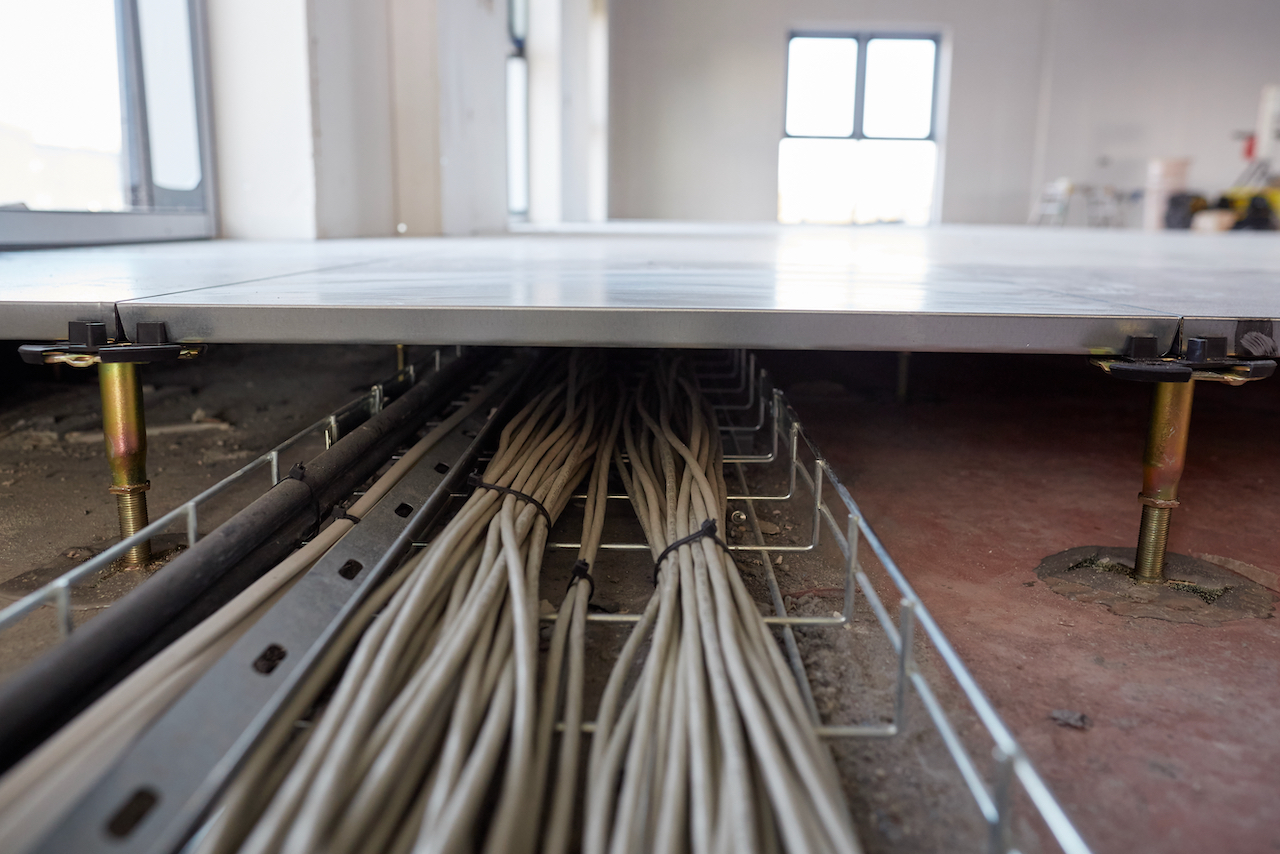What Is a Raised Floor?

A raised floor system is a solution that provides a mechanical platform that elevates the base of interior spaces above the subfloor. It is typically made up of panels and pedestals, and the pedestals are generally adjustable to different levels. The panels, which are designed to be interchangeable, are placed on top of the pedestals, forming the raised floor. The height of the floor can be altered to accommodate cables, electrical wiring, HVAC and plumbing systems, security systems and other infrastructure components.
There are two main types of raised floor systems: low-profile and traditional post-and-panel.
Low-Profile Raised Floor Systems
Low-profile raised floor systems are an innovative modern flooring system that provides installation benefits and a lower profile compared to traditional post-and-panel systems. The floor panels sit directly on adjustable support pedestals, which are mounted on the subfloor. Ranging from five to ten centimeters high, low-profile flooring is lower than traditional systems, but still provides ample space for cable management and various infrastructure requirements.
Low-profile raised floor systems are modular, allowing for easy customization and upgrading when requirements change. Modular design means that customized support and leveling systems can be implemented as per the specific requirements. Known for being quick and easy to install, low-profile systems are typically favored in server rooms, data centers and executive office suites.
Traditional Post and Panel Raised Floor Systems
Traditional raised floors are made up of post and panel systems. Panels are individually suspended on adjustable pedestals or post pivots, which are fastened to the subfloor. Traditional flooring systems range in height from 15 to 60 centimeters, creating an underlying space that is easy to access, allowing for easier maintenance and upgrades.
The post-and-panel system is the predecessor technology to low-profile systems, and while they are still used in many buildings, they may require longer periods for installation when compared to modern low-profile systems. Traditional raised floors are widely utilized in areas that include data centers, call centers, and telecommunication facilities.
Cable Management Vs. Heating and Air
Regardless of the type of raised floor system, there are two primary functions for the raised access flooring system: cable management and air conditioning. The cable management system consists of cables, electrical, and network wires that are distributed in a safe and secure manner beneath the raised floor. This solution provides quick access to data, power, and cables, making maintenance and repair work an easy task.
Air circulation and cooling systems are another major feature of raised access flooring, particularly for data centers. The raised floor system distributes the cool air below and exhausts hot air from the top, minimizing any equipment downtime and maximizing performance levels.
Find out More About Raised Floors
The size, use, and function of the facility are all essential components when deciding which access flooring option to choose. Upfront costs, maintenance considerations, aesthetic design, technical infrastructure, and other factors must be taken into account when selecting a raised floor system.
As an integrated enterprise concern with designing, researching, manufacturing, and servicing since the early 1980s, Hebei Kehua Prevent Static Floor Making Co., Ltd. has been devoted to developing, manufacturing, and marketing raised access floor systems. They provide innovative, high-quality, and affordable solutions for various facility types, including but not limited to computer rooms, data centers, office buildings, and schools.
In conclusion, raised access flooring systems provide a secure and versatile foundation for modern buildings. Low-profile and traditional post-and-panel systems offer different benefits concerning speed, cost, space requirements, and customizability. Proper cable management and air circulation are crucial components that must be taken into account when selecting a raised floor system, and it is important to work with an experienced and proven manufacturer, such as Hebei Kehua Prevent Static Floor Making Co., Ltd., to make the right decision.